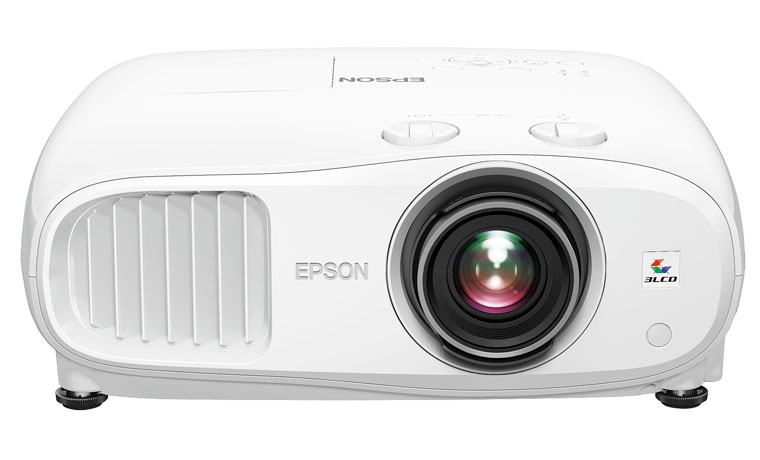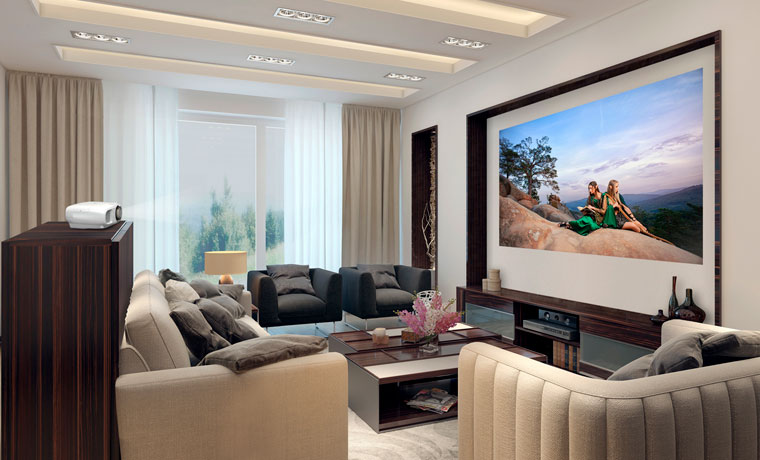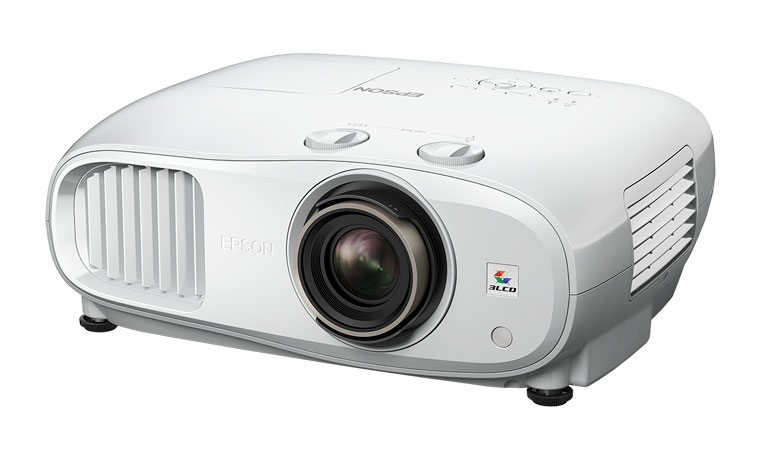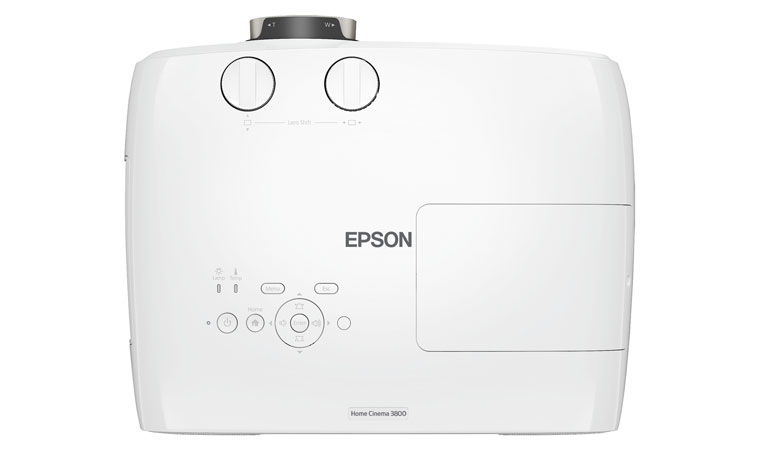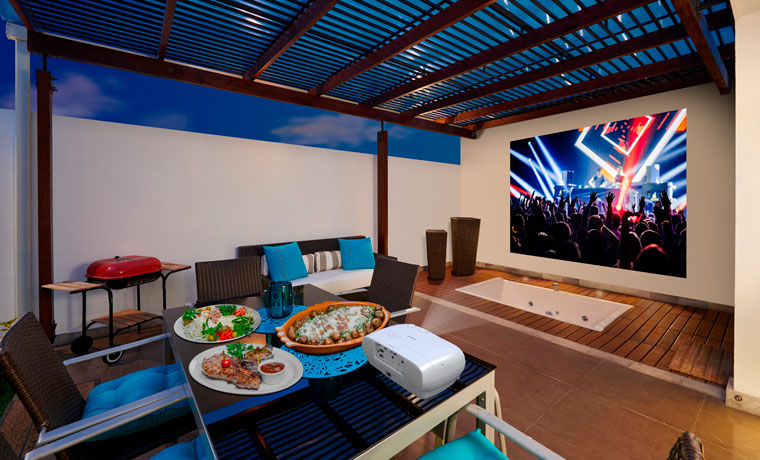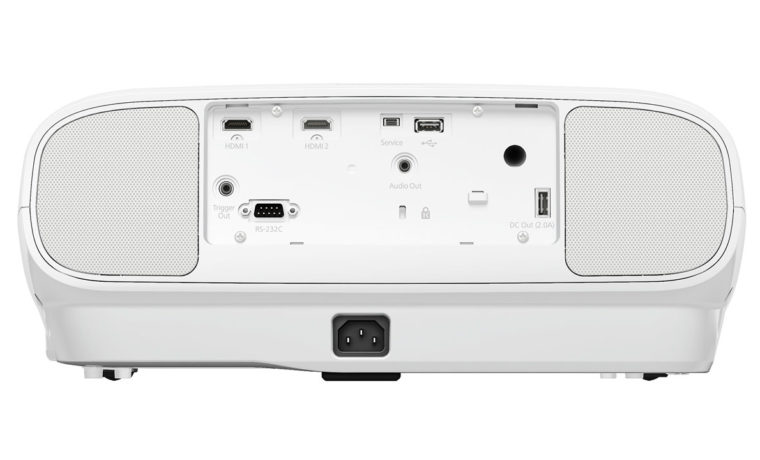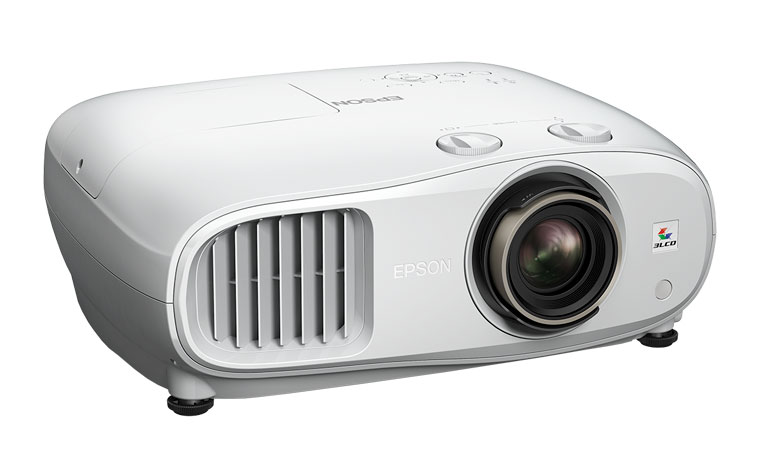Each of the three LCD imaging panels in the HC3800 has a resolution of 1920x1080 pixels. Epson's 4K Enhancement technology quickly shifts each pixel back and forth diagonally between two positions, doubling the effective number of pixels on the screen. This is still not native 4K/UHD resolution, which has four times the number of pixels as 1920x1080, but good image processing—which Epson certainly has—helps make it look much sharper than full HD. Plus, projectors with native 4K/UHD resolution start at $5000.
Thanks to 4K Enhancement, which is part of Epson's 4K Pro-UHD suite of technologies, the HC3800 can accept and display 4K/UHD content from UHD Blu-ray discs and streaming providers that offer it. Most people can't see the difference between true 4K/UHD and 4K Enhancement pixel-shifting at normal viewing distances, especially with a high-quality lens. Epson touts its precision lens in the HC3800, which helps bring out the extra detail.
Another important feature offered by this projector is horizontal and vertical lens shift, which are not often included in projectors at this price point. This allows great flexibility in placing the projector while keeping its image aligned with the screen. Like virtually all projectors, the HC3800 also offers keystone correction to compensate for off-center placement, but this degrades the visible detail, wiping out the benefit of 4K Enhancement. I strongly recommend against using keystone correction if you can possibly avoid it.
In addition to lens shift, the HC3800 offers a zoom lens with a zoom ratio from 1.0 to 1.62 and a throw distance range from 1.32 to 2.15 times the screen width. That means the projector can be placed from 3.8 to 46.3 feet from the screen and create an image from 40" to 300" diagonally. I'd call that pretty darn flexible, though the extreme ends of those ranges would not produce good picture quality.
Like many projectors these days, the HC3800 supports high dynamic range in the HDR10 and HLG formats. Epson claims a fully 10-bit signal path with partial 12-bit processing, which should help eliminate any visible banding. Also, the dynamic contrast ratio is specified at 100,000:1 with the auto iris enabled. Manufacturer contrast-ratio claims are almost always wildly inflated, so I take this number with a big crystal of salt.
Many experts say that projectors can't do "real" HDR, because there is simply too little light coming off the screen. For example, Dolby Vision projectors in Dolby Cinema venues achieve a peak brightness of 108 nits on a screen measuring 20 or 30 feet wide, which is twice the peak brightness of a conventional commercial-cinema projector but only a tenth or less of what many HDR-capable LED/LCD TVs can reach. So, most people say that HDR projectors are more properly called "extended dynamic range" or EDR. I'm fine with that distinction, though the image quality of such projectors is still clearly better than those that reproduce only SDR.
3D might be gone from new flat-panel TVs, but it's still going strong in projectors. The HC3800 supports all 3D formats, though the resolution of 3D content is limited to 1920x1080. Viewing 3D requires optional RF-based active-shutter glasses, which are available from Epson and third-party companies like Xpand.
Epson claims the input lag is no more than 20 ms (4K @ 60 Hz), though we have measured the input lag of other similar Epson projectors at 27 ms at 1080p. In general, an input lag of 55 ms or less is acceptable, while a lag in the mid-30s is considered good. The HC3800's input lag of 20 to 27 ms is very good, which will please gamers.
The HC3800 offers two onboard speakers with a total of 10W of amplifier power. This is very handy if you routinely move the projector from, say, the living room to the bonus room to the back yard for outdoor movie night, and it's better than many projectors that provide only one speaker. But it's undoubtedly a far cry from just about any outboard audio system. Fortunately, the projector offers an audio-output jack that sends the audio signal to an external speaker system, which should give you much better sound quality.
In addition to the physical audio output, the HC3800 can send audio to an external speaker via Bluetooth using the high-quality aptX codec and A2DP profile. This eliminates the need for a cable between the projector and speaker, adding to its flexibility. This is a great feature I wish more projector manufacturers would adopt.
One feature that's missing from the HC3800—and, to be fair, most other projectors—is a suite of built-in streaming apps that can be found in so-called smart TVs these days. Optoma and LG offer a few "smart projectors" with streaming apps, but this is still fairly rare. Of course, most users get their online content from a streamer such as Roku or Amazon Fire TV, which can easily be used with the HC3800.

